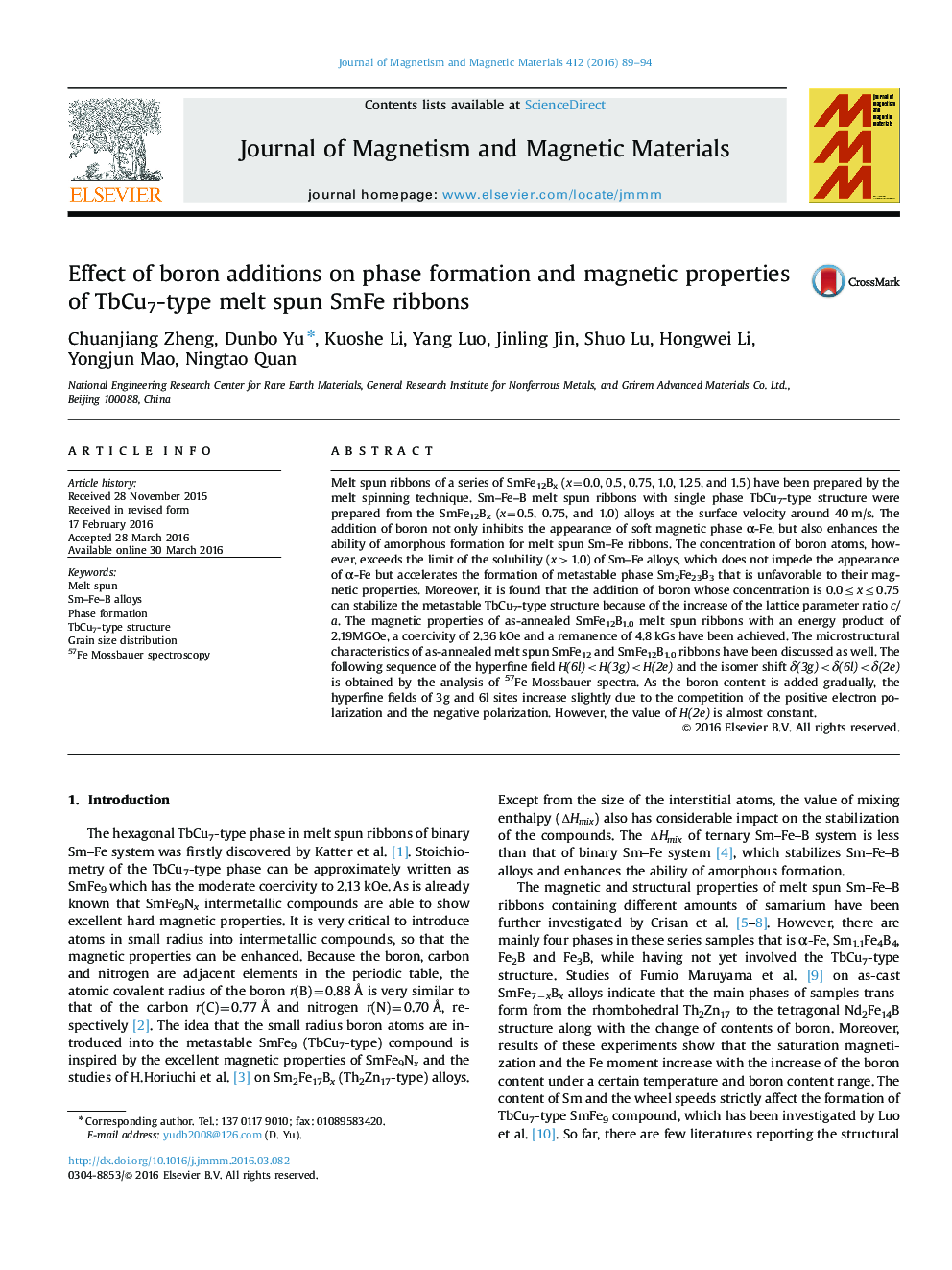| Article ID | Journal | Published Year | Pages | File Type |
|---|---|---|---|---|
| 1797925 | Journal of Magnetism and Magnetic Materials | 2016 | 6 Pages |
•A certain amount of boron additions can inhibit the emergence of the soft magnetic phase α-Fe and improve the ability of amorphous formation.•There is a solubility limit of boron atom within melt spun Sm–Fe alloys with TbCu7-type structure, and the metastable phase Sm2Fe23B3 will appear when the content of boron exceeds the limit.•The boron additions greatly refine the grain size of SmFe12B1.0ribbons at the surface velocity about 40 m/s, the mean grain size of about 22 nm.•The following sequence of the hyperfine field H(6l) Melt spun ribbons of a series of SmFe12Bx (x=0.0, 0.5, 0.75, 1.0, 1.25, and 1.5) have been prepared by the melt spinning technique. Sm–Fe–B melt spun ribbons with single phase TbCu7-type structure were prepared from the SmFe12Bx (x=0.5, 0.75, and 1.0) alloys at the surface velocity around 40 m/s. The addition of boron not only inhibits the appearance of soft magnetic phase α-Fe, but also enhances the ability of amorphous formation for melt spun Sm–Fe ribbons. The concentration of boron atoms, however, exceeds the limit of the solubility (x>1.0) of Sm–Fe alloys, which does not impede the appearance of α-Fe but accelerates the formation of metastable phase Sm2Fe23B3 that is unfavorable to their magnetic properties. Moreover, it is found that the addition of boron whose concentration is 0.0≤x≤0.75 can stabilize the metastable TbCu7-type structure because of the increase of the lattice parameter ratio c/a. The magnetic properties of as-annealed SmFe12B1.0 melt spun ribbons with an energy product of 2.19MGOe, a coercivity of 2.36 kOe and a remanence of 4.8 kGs have been achieved. The microstructural characteristics of as-annealed melt spun SmFe12 and SmFe12B1.0 ribbons have been discussed as well. The following sequence of the hyperfine field H(6l)
